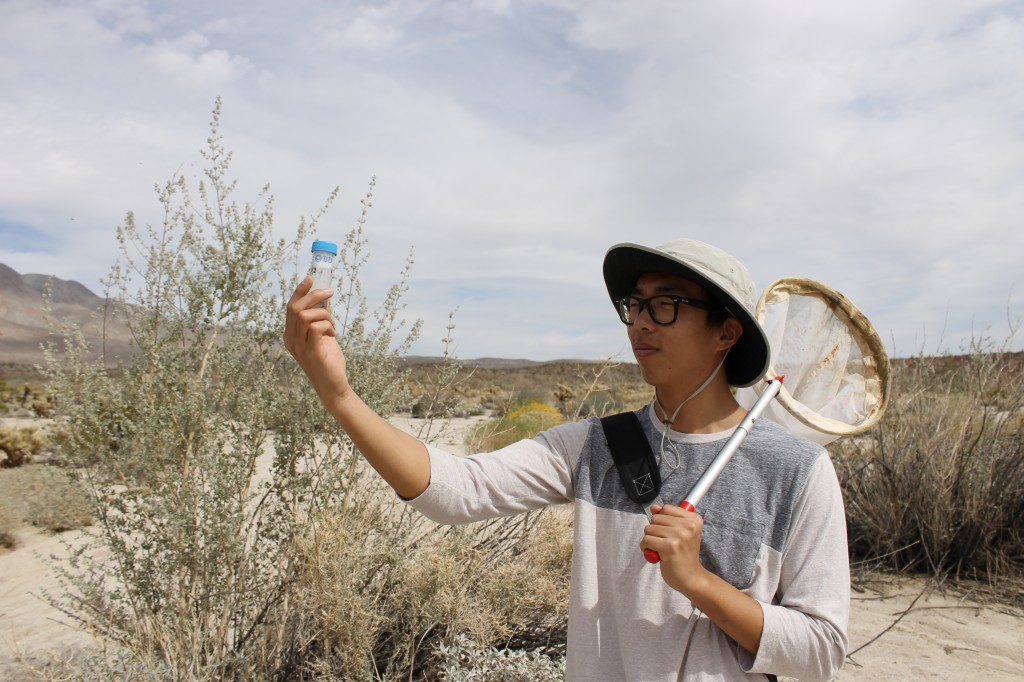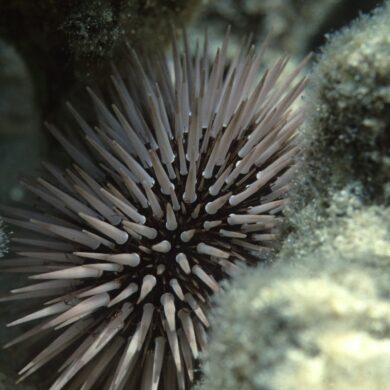Written by Haebin Liew | Blogger | SQ Online (2013-14)
Waking up earlier than I have for any of my classes (6:00 AM to be exact), I eagerly waited for James, the graduate student I work with in the Holway lab, to embark on our epic bee catching trip to Anza-Borrego Desert. James invited several other members in our lab and myself to collect some bees as a part of an ongoing biodiversity survey of San Diego County pollinators.
After a scenic yet nauseating drive eastward through the mountains, we arrived in an arid expanse of hills and some really cool desert flora. We met up with Larry, a senior botanist of the San Diego State Parks and John Muir doppelganger, who would be our guide to the desert. He directed my attention to some of the more unique plants that were too interesting not to be mentioned:
Decked out fashionably in cargo pants and sun hat, I was ready to net some bees in the name of science. We spent anywhere from a couple minutes to ten minutes staking out to catch anything but a honeybee, Most of the bees I caught were sweat bees (Lasioglossum) found on chuparosa (Justicia californica) but I was also able to catch a very elusive bee from the Anthophora genus!
A couple sweat bees would occasionally land on my hand because they supplement their diet with the salt from human sweat, hence their names. This particular species are primitively eusocial, meaning their division of labor is divided by a “queen” and her workers. This is not unlike honey bees, who are highly eusocial, however with the key difference that primitively eusocial bees lack morphological differences and are strictly behavioral in their roles.
After many hours of waiting around bushes and exploring the desert high and low for bees, we packed up and headed back to UCSD. It was my first time at Anza-Borrego and the atmosphere was great: quiet, mild in weather, and a beautiful landscape that anyone can enjoy. I highly recommend anyone and everyone to visit Anza-Borrego, probably in the winter unless you want to boil yourself alive in the summer (a nice and toasty 107°F), be it for sightseeing or for collecting flora and fauna. I will definitely be heading back in the near future as well as other sites that my lab will visit to collect more bees for the biodiversity survey later in the spring. I will also keep updates on my lab work on a somewhat regular basis so be sure to check out my blog for the upcoming weeks. Until next time!

